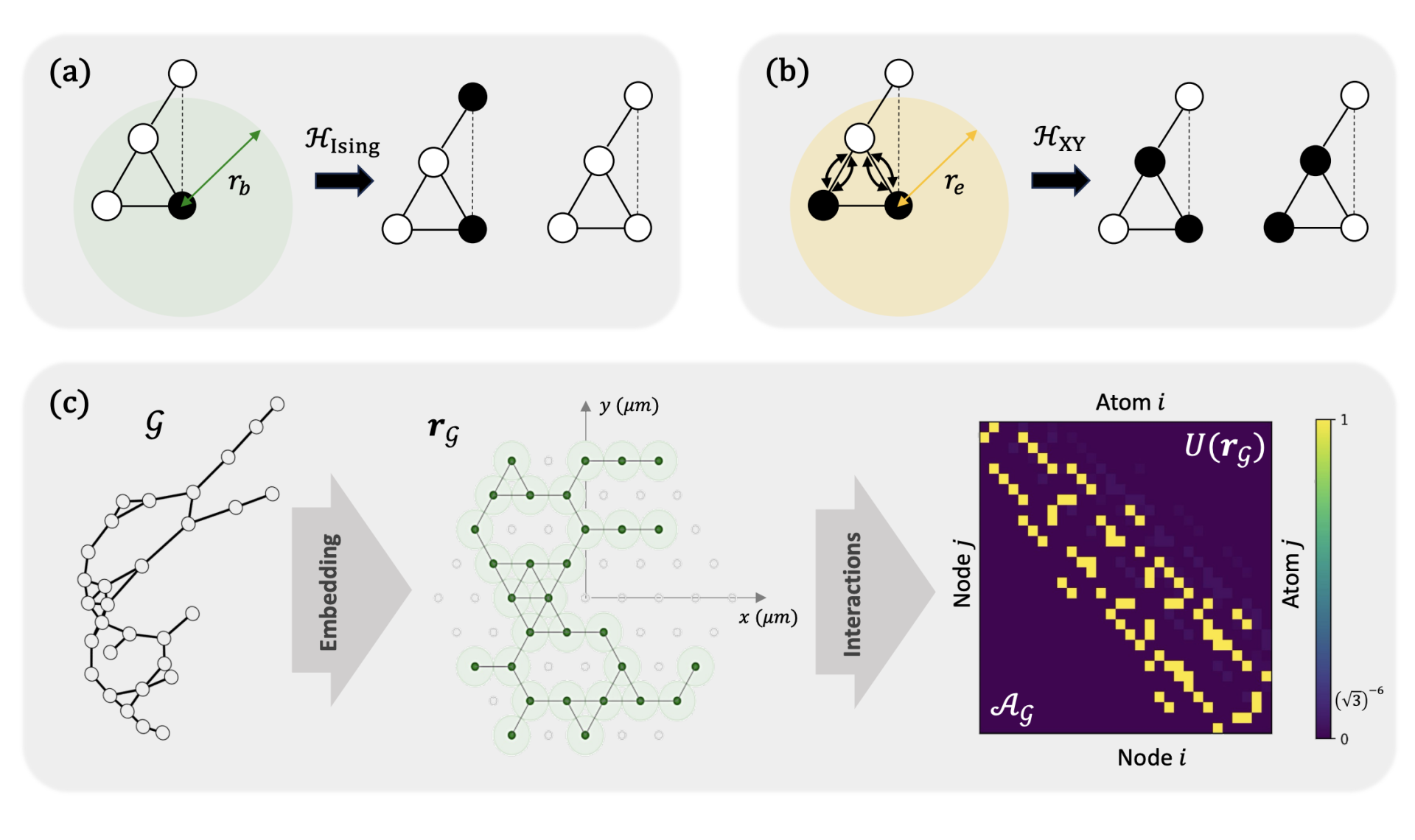Neutral atom quantum processors are a promising technology in quantum computing. They can reconfigure the geometry of the qubit register, which allows for the native embedding of graph-structured problems at the hardware level.
This feature is beneficial for complex optimization and machine-learning tasks. The processors can generate processed quantum states that retain graph complex properties, offering direct solutions to problems or resources in hybrid quantum-classical schemes. Recent advancements have seen high-fidelity simulations, including quantum Ising models with up to 200 spins. The technology’s versatility and control make it ideal for tackling quantum simulation problems.
What are Neutral Atom Quantum Processors, and How Do They Work?
Neutral atom quantum processors are a type of quantum computing technology with significant theoretical and experimental advancements. These processors have the unique ability to reconfigure the geometry of the qubit register from shot to shot, which allows for the native embedding of graph-structured problems at the hardware level. This feature has profound implications for solving complex optimization and machine-learning tasks.
In a neutral atom quantum processor, qubits can be driven to generate processed quantum states that retain graph complex properties. These states can then be used to offer direct solutions to problems or as resources in hybrid quantum-classical schemes. The technology’s versatility and high level of control make it particularly promising for tackling quantum simulation problems that are challenging to emulate classically.
Recent setups of neutral atom quantum processors have achieved high-fidelity simulations, including quantum Ising models with up to 200 spins and quantum XY models with 100 spins in two-dimensional arrays of atoms. The continuous enhancement of operation fidelities signifies the ongoing progress in this field.
How Can Neutral Atom Quantum Processors Address Complex Graph Problems?
Neutral atom quantum processors can be used to address complex graph problems, which span from optimization challenges to machine learning tasks. Graphs represent complex connections between entities and are intrinsic to many scientific, engineering, and industrial scenarios. For example, in social networks, individuals are connected based on their relationships; in logistics, transportation routes constitute edges connecting significant locations; and in molecular biology, edges represent chemical bonds between atoms.
However, graphs’ extensive flexibility can also lead to resource-intensive data analyses. The properties of neutral atoms, particularly the phenomenon of Rydberg blockade and the native ability to perform interacting quantum walks, offer an appealing avenue for achieving enhanced computational capabilities in graph-related endeavors.
As hardware improvements lead to higher numbers of qubits and new features such as partial addressability gradually become available, more industrial graph problems can be embedded in models accessible to neutral atom processors. By leveraging this enhanced controllability, neutral atom technology can help to swiftly and efficiently navigate complex computational challenges.
What is the Role of Graph Hamiltonians in Neutral Atom Quantum Processors?
Neutral atoms in arrays of optical tweezers are a robust platform for implementing quantum Hamiltonians and carrying out analog quantum processing. This technology’s distinctive strength lies in its capacity to program arbitrary register geometries in both 2D and 3D and to foster strong programmable interactions among qubits.
The adaptability of the register geometry arises from employing holographic techniques to design the arrangement of microscopic atomic traps. Furthermore, the atoms, when promoted to Rydberg states, can exhibit power law two-body interactions derived from dipole-dipole couplings. By carefully tuning their respective pair distances, one can then program the magnitude of their interactions and precisely engineer an interaction Hamiltonian embedding the adjacency matrix of a graph.
One can leverage the Ising interaction to engineer the well-known Rydberg blockade effect, where two Rydberg atoms experience an interaction strong enough to shift significantly the energy of the doubly excited state, preventing their simultaneous excitation.
What are the Ongoing Advancements in Neutral Atom Quantum Processors?
The advancements in quantum algorithms for graph problems running on neutral atom Quantum Processing Units (QPUs) are ongoing. The focus is on enhancing the scalability, controllability, and computation repetition rate of neutral atom QPUs.
As hardware improvements lead to higher numbers of qubits and as new features such as partial addressability gradually become available, more and more industrial graph problems can be embedded in models accessible to neutral atom processors.
The continuous enhancement of operation fidelities signifies the ongoing progress in neutral atom quantum processors. As such, the unique attributes of quantum systems can be harnessed for specialized computations in groundbreaking approaches.
What is the Future of Neutral Atom Quantum Processors?
The future of neutral atom quantum processors looks promising. The technology’s versatility and high level of control make it particularly promising for tackling quantum simulation problems that are challenging to emulate classically.
As hardware improvements lead to higher numbers of qubits and as new features such as partial addressability gradually become available, more and more industrial graph problems can be embedded in models accessible to neutral atom processors.
The continuous enhancement of operation fidelities signifies the ongoing progress in neutral atom quantum processors. As such, the unique attributes of quantum systems can be harnessed for specialized computations in groundbreaking approaches.
Publication details: “Graph Algorithms with Neutral Atom Quantum Processors”
Publication Date: 2024-03-18
Authors: Constantin Dalyac, Lucas Leclerc, Louis Vignoli, Mehdi Djellabi, et al.
Source: arXiv (Cornell University)
DOI: https://doi.org/10.48550/arxiv.2403.11931

